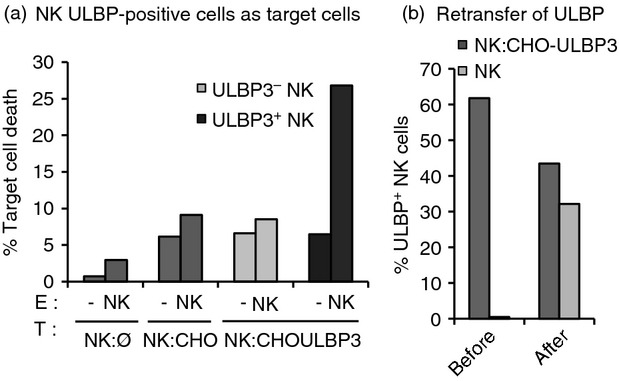Figure 5.

UL16 binding protein (ULBP) -positive natural killer (NK) cells become targets for autologous NK cells and re-transfer the acquired NKG2D-ligand. (a) ULBP3+ NK cells as target cells. NK cells were labelled with PKH2 and incubated either alone (NK:Ø) or co-incubated for 1 hr with Chinese hamster ovary (CHO) parental (NK:CHO) or ULBP3 transfectants (NK:CHOULBP3). After co-incubation, these green NK cells were used as targets (T) in degranulation assays in which the effectors (E) were autologous unlabeled NK cells (NK). Target cells were also maintained alone (−) in culture to determine the levels of spontaneous cell death. Death was analysed by 7-aminoactinomycin D-staining and flow cytometry. Cell death is shown separately for ULBP-negative and -positive NK cells. (b) ULBP re-transfer. NK cells were co-incubated for 1 hr with ULBP3 transfectants (NK:CHOULBP3), NK cells from co-incubation experiments were sorted and used as targets in co-culture experiments with autologous effector cells (NK) labelled using the Cell Trace Violet kit. The percentage of ULBP+ NK cells before and after co-culture within each population of NK cells is shown. (a) and (b) show one representative result of three experiments.
